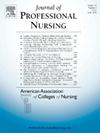Nursing faculty and undergraduate nursing students’ perceptions and experiences of collaborative learning: A scoping review
IF 2.9
3区 医学
Q1 NURSING
引用次数: 0
Abstract
Background
Collaborative learning has been used commonly in contemporary nursing education, valued for fostering critical thinking, enhancing problem-solving skills, and deepening understanding of learning outcomes. However, there is a lack of comprehensive evidence synthesis regarding the experiences of nursing faculty and nursing students in collaborative learning, which is necessary to gain better insights into this process.
Objective
To synthesise the literature on the perceptions and experiences of nursing faculty and undergraduate nursing students regarding collaborative learning in pre-licensure nursing programs.
Method
A scoping review was conducted using the Joanna Briggs Institute Methodology for Scoping Reviews, following the framework originally developed by Arksey and O'Malley (2005).
Results
Twenty-two studies were included for data extraction and synthesis. Thematic synthesis, guided by Braun and Clarke's approach, revealed three primary themes: benefits of collaborative learning, barriers to collaborative learning, and recommendations for improvement. Each theme was further divided into sub-themes. Both nursing faculty and students identified several benefits, such as personal, professional benefits and impact on nursing practice. However, they also identified barriers, including issues related to planning and implementation, as well as student engagement. Overall, the findings indicate a scarcity of studies that explore nursing faculty's perspectives and collaborative learning as a cohesive process.
Conclusion
Despite the established benefits of collaborative learning in nursing education, certain barriers necessitate a more thorough exploration of collaborative learning as a dynamic process to enhance its further effectiveness in nursing education. The limited emphasis on faculty's perspectives underscores the need for a deeper investigation into collaborative learning environments, particularly from the faculty viewpoint, to provide comprehensive understanding of this crucial process.
护理教师与本科护生对合作学习的认知与经验:范围检视
协作学习在当代护理教育中已被广泛应用,它对培养批判性思维、提高解决问题的能力和加深对学习结果的理解具有重要意义。然而,关于护理教师和护生在合作学习中的经验缺乏全面的证据综合,这对于更好地了解这一过程是必要的。目的综合文献资料,了解护理教师和本科护生对护理执照预备课程合作学习的看法和经验。方法范围审查使用乔安娜布里格斯研究所范围审查方法进行,遵循最初由Arksey和O'Malley(2005)开发的框架。结果共纳入22项研究进行数据提取和综合。在Braun和Clarke方法的指导下,主题综合揭示了三个主要主题:协作学习的好处、协作学习的障碍和改进建议。每个主题又进一步分为子主题。护理教师和学生都确定了一些好处,如个人、专业利益和对护理实践的影响。然而,他们也发现了障碍,包括与规划和实施以及学生参与有关的问题。总的来说,研究结果表明,缺乏研究,探索护理教师的观点和协作学习作为一个有凝聚力的过程。结论尽管协作学习在护理教育中具有明显的优势,但仍存在一些障碍,需要对协作学习作为一个动态过程进行更深入的探索,以进一步提高其在护理教育中的有效性。对教师观点的有限强调强调了对协作学习环境进行更深入调查的必要性,特别是从教师的角度,以提供对这一关键过程的全面理解。
本文章由计算机程序翻译,如有差异,请以英文原文为准。
求助全文
约1分钟内获得全文
求助全文
来源期刊
CiteScore
4.80
自引率
8.00%
发文量
153
审稿时长
52 days
期刊介绍:
The Journal will accept articles that focus on baccalaureate and higher degree nursing education, educational research, policy related to education, and education and practice partnerships. Reports of original work, research, reviews, insightful descriptions, and policy papers focusing on baccalaureate and graduate nursing education will be published.

 求助内容:
求助内容: 应助结果提醒方式:
应助结果提醒方式:


